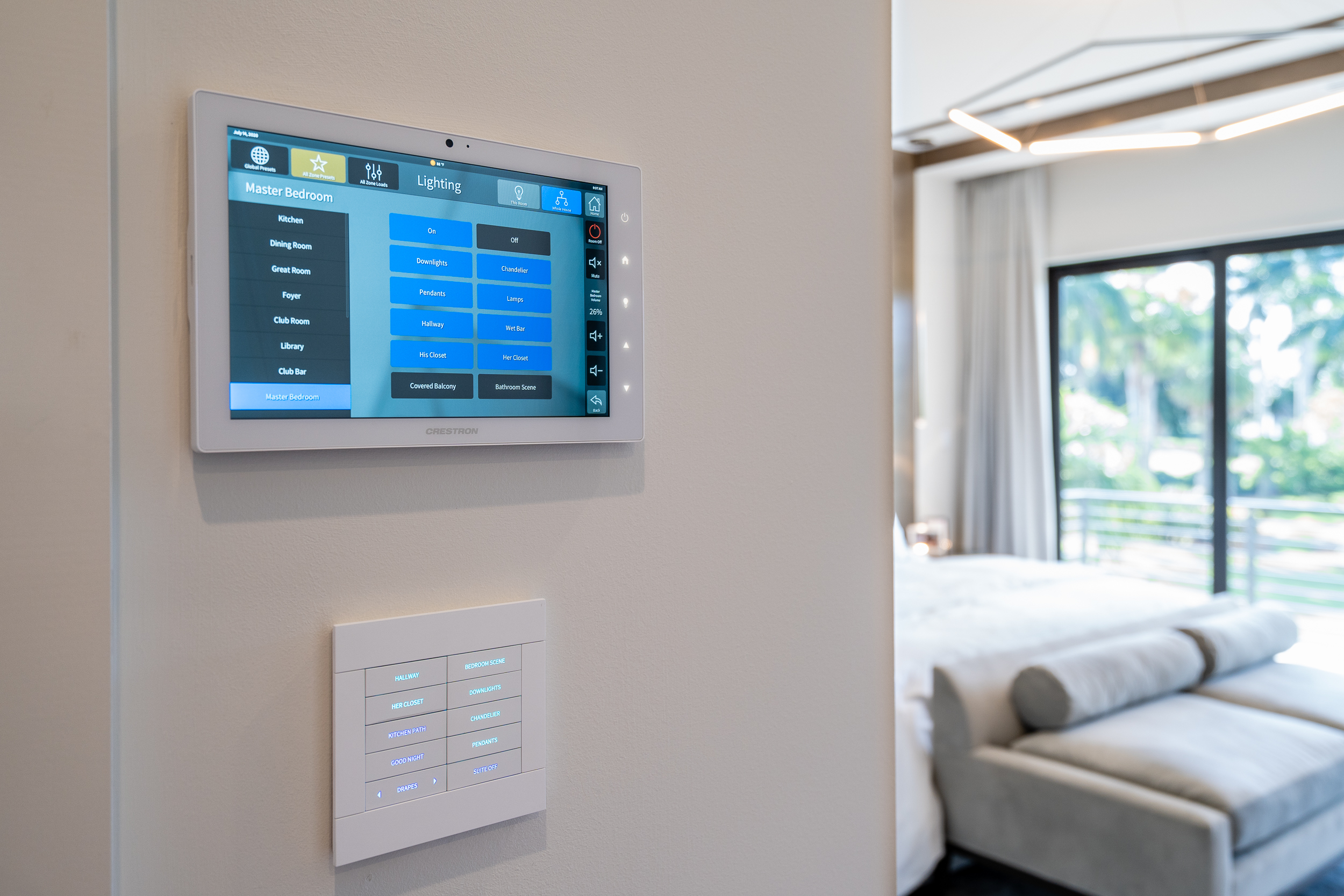
Building a smart home – for real. Honest.
At BRAVAS, we believe that without the right technology, you can not build a truly beautiful and luxurious home. Yet, when we talk to many builders and homeowners and suggest this, they turn and run the other way. For many people “smart home” is an oxymoron like “act naturally” or “open secret.” For some, their experience with technology in their home is that it gets in the way of their day-to-day living. The promise, they say, is never paid off by the reality.
So why do so many people believe technology is more of a hindrance than a help, and how can you get the benefits without the pitfalls?
Where the problem starts
For those of us who believe that the right technology can change the way you enjoy your home, we see a lot of sources of pain. The first is obvious, -- poor, or at least overly aggressive, marketing by the markers of ‘smart’ devices. Devices that are easy to use can become a nightmare when the software needs updating or a network needs configuring. Worse, their friend/neighbor/son/golf-buddy did the install, as it was going to be a ‘piece of cake’ - well it was, till they tried it in your home.
The next issue is cost. While we all know we pay for value, the difference between the entry price for and ‘high end’ pricing can appear to be very steep. Why pay $1000 plus for a prewired motorized shade when your local shade store can provide you a lovely manual system for a few hundred dollars? Is there really a big difference?
Finally, and probably most powerfully, so many people have had bad experiences with technology installers in their homes, so minimizing their impact on your home building project seems like a smart idea.
The resolution to these, we believe at BRAVAS, is two-fold: get the best advice and pick the right partner.
Getting the best advice
At BRAVAS, we believe that the relationship with our customers does not stop at install but can last if you have your home or at least our system in it. So, what does that relationship look like? Well here are 2 core things you should consider early in your building project.
- How do you use your home?
While this may seem like an obvious thought, it is worth stopping and thinking about how you are going to use your home. Here are just a few of the scenarios we hear that can impact what technology you use.
- Our home has lots of westerly facing windows
- We live outside all year around
- We often entertain large groups
- We have intimate dinner parties
- I can not sleep in rooms that are not dark
- We love family movie night
- We like to watch multiple football games at once
- We want to make sure our home is safe and sound
I am sure you could add to this list but if you want your home to work for you, rather than you have to work around it, then each of these can have very specific impacts on your technology choices. At BRAVAS, these are ideas we will explore to propose the right technology for your home and the right support systems after it is installed.
- How much to spend on home technology?
One of the questions we often get asked is how much should you spend on technology in your home? Well of course it depends on what you want, but as a simple guide you should probably be spending 5% on top of the home cost. So for a $1m home, that means at least $50,000. Clearly if you put in a private cinema, a listening room and outdoor technology you can clearly spend much more. So how do you justify the extra cost?
It’s really hard to financially justify it in a simple spreadsheet. Yes, automated shades can save on electricity and can protect your posessions from UV light but is it enough to cover the costs? Maybe, maybe not, but we never ask the same question about, say, our light fixtures or the fabrics of on our couch. You need to think about the enjoyment and pleasure a well designed home automation brings and balance the cost against that.
Two examples to make the point:
Manual vs automated shades - It’s really ‘not that hard to open a few shades if we want more light’ compared to the cost. Yet the research shows people who install manual shades do not change them 75% of the time – it’s easier to turn lights on. Well, natural daylight is healthier for your family, and opening your shades doesn’t have to be any harder than turning a light on.
Whole home music vs standalone –‘we only really need music in the living room, if we need speakers in any other room we will buy a standalone system’. Customers who have whole home audio systems will often tell us that the rooms they listen to music most in, their bedroom and the kitchen, are not rooms they had first considered. Moreover, for those that entertain, friends are often moving between rooms and outdoor spaces and music that places across all those areas has a huge impact of the feeling of their parties.
Of course, at BRAVAS, we also think who you pick to do your installation is important.
Getting it right first time
There is an old adage about software that says, if a piece of software is easy to learn it will be hard to use, and if it’s hard to learn it can be easy to use. We could say something similar about smart home technology. Smart home technology that is easy to install will take more effort to manage and integrate with the rest of your home, and the technology that appears to be harder (and more costly) to install will be easier to use and integrate with the rest of your home.
Here is an example: it takes about 15 minutes to install a digital thermostat, like a Nest or Ecobee, into your home. But when it comes to using that device, it requires its own app or remote, will not work with your fans, and probably can not be tied into anything else in your home. Of course some people will want to use systems like Wink to try and connect things but those that do so often do it as a hobby!
In the same way your home needs the right foundation, so does your home automation system. The two most critical elements to that are the right home network and a whole home automation platform like Savant, Crestron, Elan or Control4. While the choice of home automation platform can rule out some stand-alone devices, they mostly integrate with most good technologies. You may not be able to use a Nest system, for instance, but the automation platform has very similar function and will work with the rest of your home to create scenes.
Scenes can tie lighting, shades, TV, music, air conditioning, fans and many other technologies into single buttons or commands. So when you are ready for morning, the ‘Good Morning’ scene opens your shades, turns on your lights, tunes your TV or radio to your morning entertainment, and sets your home for the day.
One scene, for instance, that many people use and find invaluable is ‘Away.’ Away is often a button by the front door that will turn off all lights and TV, shut shades, put thermostat to ‘away’, put on security and generally prepare your home to be left alone for some time. Just one button at the front door.
Getting it right from the start
Before you break ground on the the foundation of your home, you should decide what the foundation for your home technology is going to be. While the the home’s foundation is clearly important to the house staying upright, the technology foundation is critical to the livability of your home. Sadly, while your home’s foundation may need to be inspected by a building inspector, there are no inspectors for home technology. So if there is no inspector for the Smartness of your home, how can you tell you are getting it right?
We think the answer is to work with BRAVAS – the number one home technology integrator in the USA. We work in over 3,500 homes every year and have more technical resources than the next few companies on the list – combined. We would love to bring that team to you.



